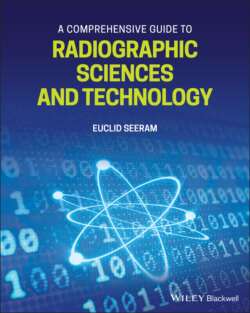Читать книгу A Comprehensive Guide to Radiographic Sciences and Technology - Euclid Seeram - Страница 23
Imaging informatics at a glance
ОглавлениеImaging Informatics is the current term used by the Society of Imaging Informatics in Medicine (SIIM) to replace the old term medical imaging informatics. SIIM notes that imaging informatics “is the study and application of processes of information and communications technology for the acquisition, manipulation, analysis, and distribution of image data.”
Imaging informatics is based on core topics that range from information and communication technologies, PACS, radiology information systems (RIS), the electronic health record, to cloud computing, Big Data, AI, ML, and DL. In this section, these core elements that characterize these topics will only be highlighted as a basis for setting the stage for the more detailed coverage later in the book.
Information technology (IT) refers to the use of computers and computer communications technologies to not only to process, store, secure electronic data but to communicate these data using computer networking infrastructure. PACS is an excellent example of an informatics‐rich medical device. PACS include the imaging image acquisition modalities such as digital radiographic and CT modalities, a computer network database server, storage and archival systems, and display workstations. PACS may be connected to information systems such as the RIS and the hospital information system (HIS). Furthermore, these systems must be fully integrated and secured for efficient and effective data interchange. One such approach within the PACS infrastructure is cloud computing, which simply provides a means of using the Internet for storage and retrieval (for example) of data using specific software packages. Additionally, emerging topics which will have an impact on the practice of medical imaging include Big Data, AI, ML, and DL.
Big Data is characterized by four Vs: Volume, Variety, Velocity, and Veracity. While Volume refers to the very large amount of data, Variety deals with a wide array of data from multiple sources. Furthermore, Velocity addresses the very high speeds at which the data are generated. Finally, Veracity describes the uncertainty of the data such as the authenticity and credibility. AI uses computers in an “effort to automate intellectual tasks normally performed by humans.” A subset of AI is ML which includes “a set of methods that automatically detect patterns in data, and then utilize the uncovered patterns to predict future data or enable decision making under uncertain conditions.” A subset of ML is DL which uses algorithms that are “characterized by the use of neural networks with many layers.” These emerging technologies will evolve and more importantly become useful tools in medical imaging. Therefore, students and technologists alike should make every effort to grasp their meaning and applications so that they can communicate effectively with radiologists and medical physics in an effort to participate actively in the management of patient care.
